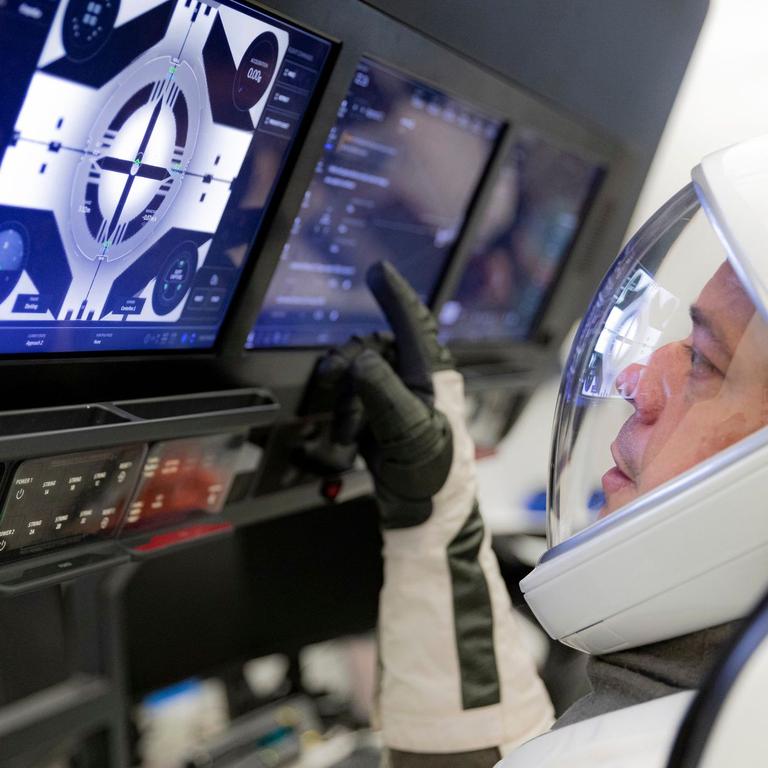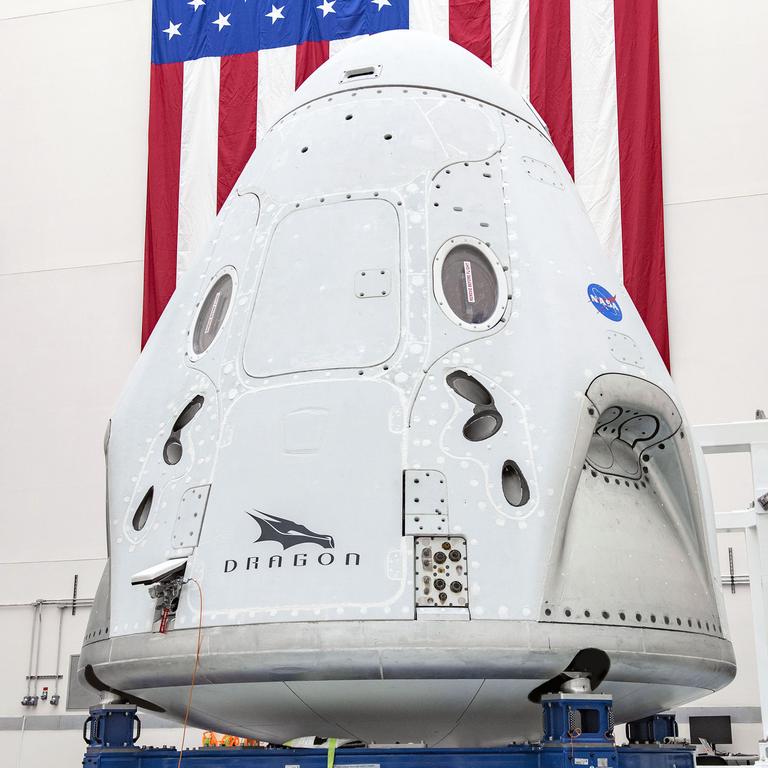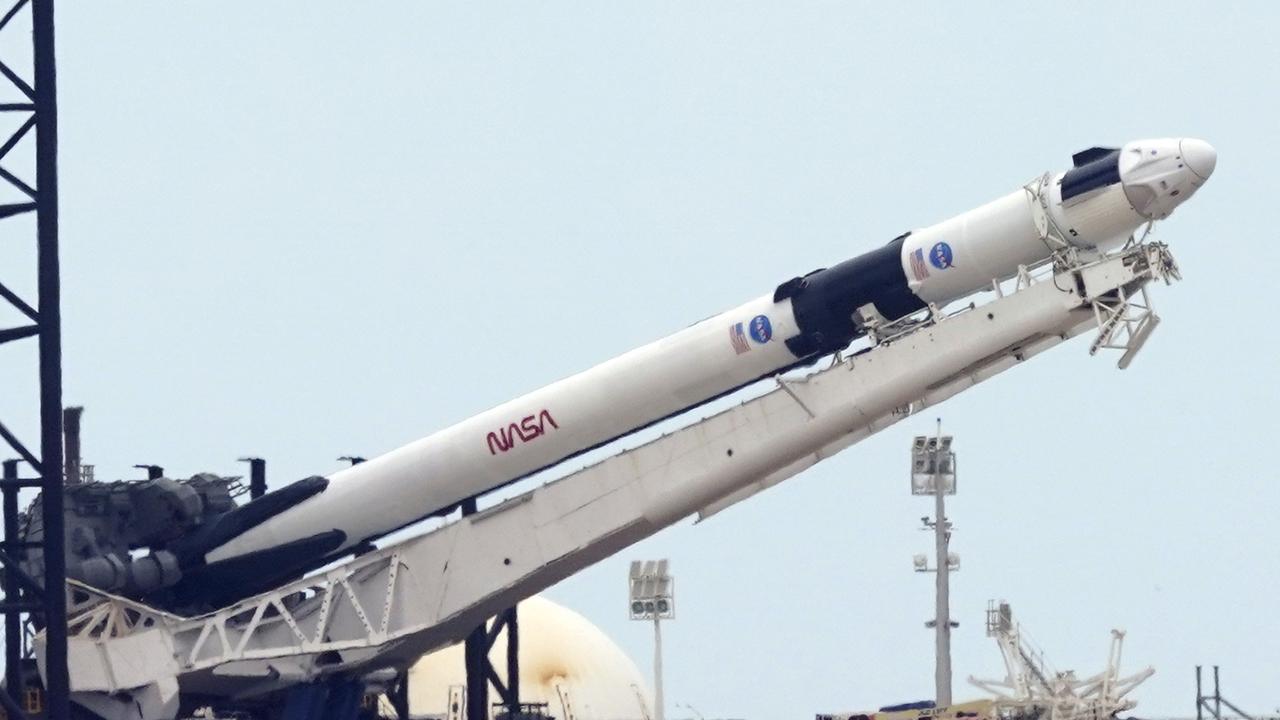NASA and SpaceX prepare for first Crew Dragon flight to ISS
A lot is riding on the launch of Elon Musk’s SpaceX rocket tomorrow – the first time NASA has launched people into space since 2011.

Elon Musk’s SpaceX company is preparing to launch its first two people into space in what could spark a renaissance in space exploration.
Elon Musk’s company will work with the United States’ space agency NASA, who have been collaborating with private companies in recent years in an attempt to reinvigorate its space program.
NASA hasn’t launched any people into space since the end of its shuttle program in 2011.
Thursday morning’s launch will be the first crewed flight as part of NASA’s Commercial Crew Development program.
Boeing is the other partner in the program and is due to conduct its first crewed flight next year, after delays in its testing procedures.
Assuming everything goes to plan, shortly after 6.30am AEST on Thursday morning, NASA astronauts Robert Behnken and Douglas Hurley will be the first two people to catch a SpaceX Crew Dragon capsule into space.

It won’t be their first time in space however, both have been aboard the old shuttle twice.
Mr Hurley was even on the final launch of the space shuttle program.
The pair will spend around 19 hours inside the capsule on the way to the ISS.
Unlike NASA’s old shuttles and rockets, SpaceX uses a similar touchscreen control system as the Tesla cars produced by one of Musk’s other companies.
The capsule has room for up to seven occupants.
RELATED: Astronauts return to virus-stricken Earth

RELATED: Tom Cruise’s extreme new movie location
SpaceX successfully tested an unmanned capsule last year, docking with the International Space Station before returning safely to Earth in March 2019.
It also completed a successful test of the Crew Dragon’s escape system, designed to save its occupants if there is a problem during the launch.
The capsule separated from a deliberately failed rocket launch in January this year and parachuted into the Atlantic Ocean.
The two-stage Falcon 9 rocket designed by SpaceX will launch the crew into space, with the capsule separating from the rocket after about 12 minutes.
RELATED: NASA relying on Bezos and Musk

RELATED: Massive flaw in Musk’s Mars hype
Thursday’s launch is the final test before SpaceX is certified to make regular flights to the ISS.
NASA has already announced the first of those flights will take place on August 30, assuming SpaceX clears its last remaining hurdle tomorrow morning.
The rocket is scheduled to take off from the Kennedy Space Centre in Florida, but there’s a reasonable chance the launch could be postponed due to bad weather.
NASA has rules around the weather on launch days, particularly if there’s any threat of storm clouds.
Apollo 12’s Saturn V rocket was struck by lightning twice after taking off in November 1969, but still managed to complete its mission.

Space flight is a risky endeavour and neither SpaceX nor NASA are likely to be taking any chances.
Both NASA and SpaceX will be looking for vindication from the launch: NASA for its experiment in tasking private companies with building its spacecraft, and SpaceX after years of working towards its first crewed flight.
NASA administrator Jim Bridenstine said the safety of the crew is the most important factor in the flight.
“We want people to be able to feel free to say, ‘No,’ and not feel any pressure to launch,” Mr Bridenstine said at a news conference on Tuesday.
He added that he’d texted the two astronauts to tell them they could ask him to stop the launch “for any reason”.
Mr Musk is optimistic, telling the Washington Post the chances of success are high, but not 100 per cent.
“We’re just doing everything we can to think of, any possible way, to improve the probability of success, because this would be a big setback if something were to go wrong,” Mr Musk told the Post.
“We’ve done everything we can to make sure that the rocket is safe and the spacecraft is safe," Mr Musk said, "but the risk is never zero when you’re going 25 times the speed of sound, and you’re circling the Earth every 90 minutes. It’s a speed that’s difficult for people to even comprehend.”

Mr Hurley said the pair were “confident in both the SpaceX and NASA teams”.
“We’ve looked at all the stuff that we need to look at, and when we’re ready to launch, we’ll go do it,” he told reporters.
Back of the mind for any crewed space mission are the disasters that have occurred in the past.
In 1986, NASA’s Challenger shuttle exploded 73 seconds after launching when a gasket that wasn’t designed for the unusually cold conditions failed, killing all seven on board, including a schoolteacher selected as part of a NASA program to inspire students.
In 2003, the Columbia shuttle disintegrated while trying to re-enter the Earth’s atmosphere, after it was damaged during launch 16 days earlier, again killing all seven on board.
An American astronaut and Soviet cosmonaut died in separate missions at the height of the Space Race in 1967.
Three cosmonauts also died in a 1971 mission failure.
A total of 19 people have been confirmed to have died as a result of failed space missions.



